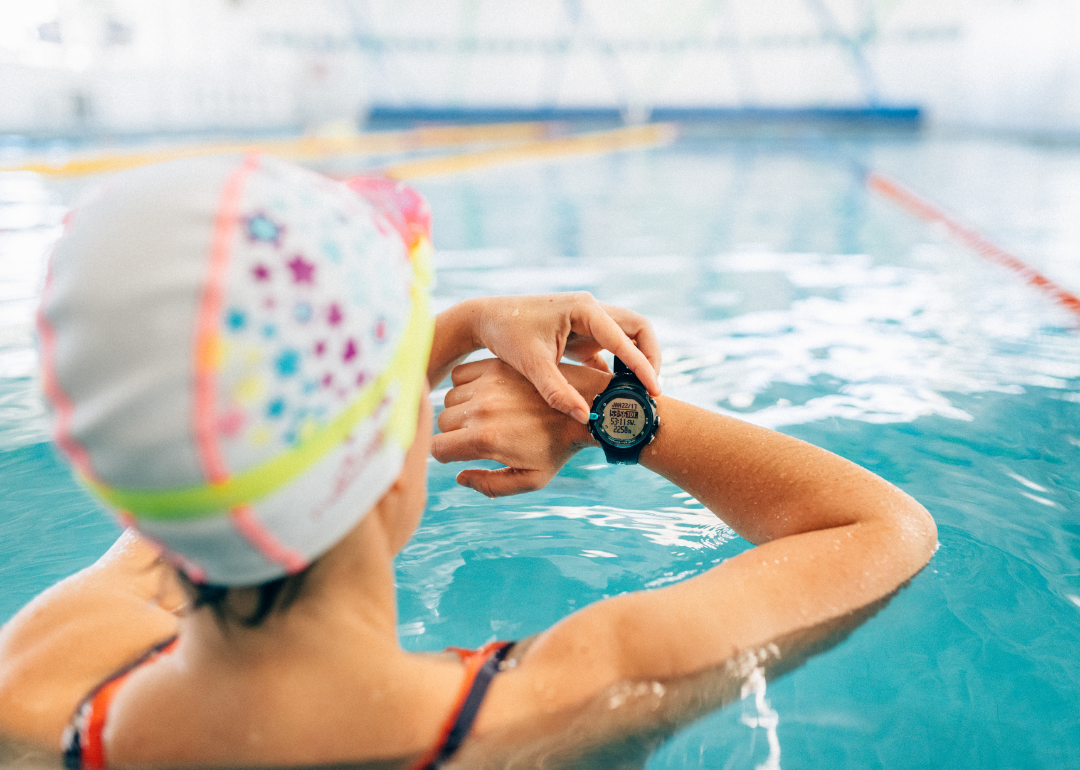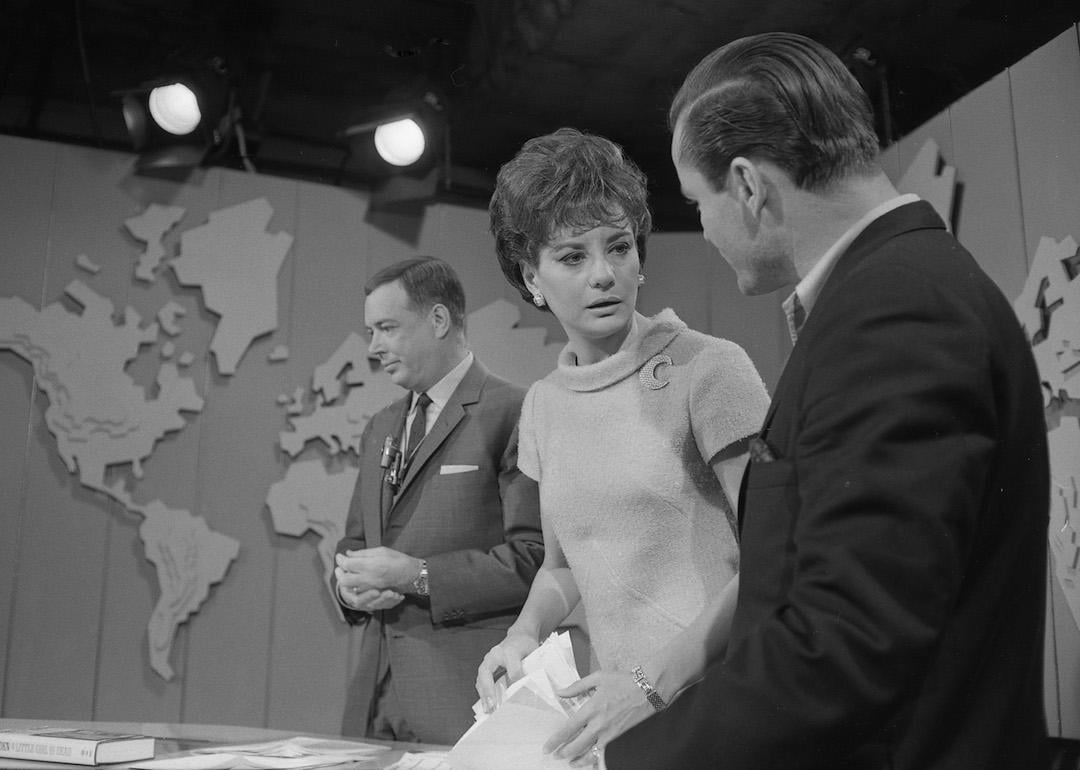
Best exercises for burning calories
People choose their workouts for any number of reasons. Fitness regimens target different muscle groups, utilize diverse kinds of equipment (or none at all), help individuals reach specific and varied goals, and can be modified for indoor or outdoor activity according to the season, skill level, or personal preference. No matter one's motivations or the necessary factors considered, one result is always the same: Exercise burns calories. The actual amount can vary greatly, though, depending on the rigor of the activity, the length of time involved, and the size and form of the athlete.
Since the number of calories burned can ultimately influence a variety of choices when it comes to health, diet, and physical activity, Stacker set out to discover which common exercises burn the most calories per hour. To do so, we consulted Washburn University's adaptation of the 2011 Compendium of Physical Activities, which compares and calculates calories burned for hundreds of activities and exercises. Washburn worked with the complex research data of the Compendium of Physical Activities and translated the results into layperson's terms by calculating calories burned for each physical activity represented based on "exercise, intensity level, and individual characteristics such as weight."
The following slides are ranked by calories burned per hour, which were calculated for 160-, 200-, and 240-pound subjects. Read on to see just how fast one needs to run to burn more 1,000 calories in 60 minutes, which of the highest-burning exercises can actually be done from a seated position, and which require little to no equipment at all. Readers may want to fill a water bottle and get their tennis shoes ready since this list gives plenty of options. Just be sure to consult with your physician before pursuing a new exercise routine and take all proper safety precautions before, during, and after a workout.
You may also like: Top health conditions affecting Americans
#18. Walking 2 mph
- Calories burned (160 lbs.): 204
- Calories burned (200 lbs.): 255
- Calories burned (240 lbs.): 305
A relaxed stroll can serve as a starting point for those who want to introduce light exercise into their routine. Walking, even at a slow pace, uses muscles in the legs, hips, and lower back side, and offers a number of benefits that include a boost to immune function and easing of joint pain.
#17. Canoeing
- Calories burned (160 lbs.): 256
- Calories burned (200 lbs.): 319
- Calories burned (240 lbs.): 382
Canoeing, which involves rowing from a seated position, requires upper body and core strength. Aspiring paddlers should keep in mind that trekking to a suitable body of water with a canoe can take extra time and energy and burn additional calories.
#16. Leisure bicycling
- Calories burned (160 lbs.): 292
- Calories burned (200 lbs.): 364
- Calories burned (240 lbs.): 436
Cycling does more than just work muscles like glutes, quads, calves, hamstrings and hip flexors. Riders may be interested to know that studies have found that cyclists live longer than those who never hop on a bike. Cycling to work, or to run occasional errands, can be an effective way to introduce the activity into a regular routine.
#15. Walking 3.5 mph
- Calories burned (160 lbs.): 314
- Calories burned (200 lbs.): 391
- Calories burned (240 lbs.): 469
The faster we walk, the more calories burned. Walking at a moderate pace, just higher than the average walking pace of 2–2.9 mph, provides a number of benefits, according to the U.S. National Library of Medicine's National Center for Biotechnology Information. A recent study found that those who walk at a regular or above-average pace also have a lower mortality risk by approximately 20%.
#12. Low-impact aerobics (tie)
- Calories burned (160 lbs.): 365
- Calories burned (200 lbs.): 455
- Calories burned (240 lbs.): 545
Aerobic exercise, or cardio, stimulates the heart and lungs and can be performed in a variety of ways including classes, with gym equipment, and through solo efforts. Experts advise participants to keep an eye on their pulse to ensure that they are making the best of their workout and not overdoing it.
#12. Resistance (weight) training (tie)
- Calories burned (160 lbs.): 365
- Calories burned (200 lbs.): 455
- Calories burned (240 lbs.): 545
Resistance training builds desired muscles and muscle groups, by requiring the body to work against weight or force. Equipment and machines can be used, but exercisers may also utilize their own body weight for desired results. Experts recommend resistance training at least twice a week.
#12. Softball or baseball (tie)
- Calories burned (160 lbs.): 365
- Calories burned (200 lbs.): 455
- Calories burned (240 lbs.): 545
Despite the stigma of being a slow sport, baseball and its cousin softball still give players plenty of opportunities to burn calories. Different muscle groups are used at different parts of the game, with the entire body needed to throw overhand, shoulders and core used for batting, and legs for running bases and making catches.
#11. Water aerobics
- Calories burned (160 lbs.): 402
- Calories burned (200 lbs.): 501
- Calories burned (240 lbs.): 600
Water aerobics, typically available in class settings, is easy on the joints. It's a popular choice for elderly exercisers and pregnant women, and it's a great option for beginners. Movements may vary depending on the class, but participants can expect to target core, arms, legs, glutes, and back muscles.
#10. Swimming laps
- Calories burned (160 lbs.): 423
- Calories burned (200 lbs.): 528
- Calories burned (240 lbs.): 632
Depending on which stroke is used, swimming laps can provide a thorough workout for a variety of muscle groups. Like water aerobics, it's also easy on the joints thanks to the water's buoyancy.
#8. Hiking (tie)
- Calories burned (160 lbs.): 438
- Calories burned (200 lbs.): 546
- Calories burned (240 lbs.): 654
Hiking is much more than a long walk in the woods. When there's varied terrain, inclines, and even gear to carry, the benefits for one's body start to add up. A recent study by the University of Innsbruck at Austria even noted that participants reported simply feeling better after hiking outside, compared to those who performed similar exercise indoors.
#8. Stationary rowing (tie)
- Calories burned (160 lbs.): 438
- Calories burned (200 lbs.): 546
- Calories burned (240 lbs.): 654
Stationary rowing swaps paddles for machinery, giving users the chance to fine-tune their movements. Though the position for a stationary rowing machine is seated, there are benefits for the entire body. Experts advise that strokes should be a ratio of 60% legs, 30% back, and 10% arms.
#7. Racquetball
- Calories burned (160 lbs.): 511
- Calories burned (200 lbs.): 637
- Calories burned (240 lbs.): 763
Racquetball is one of the few exercises to make the list that can be played as a doubles or singles game. It's also a cardiovascular workout that works both the upper and lower body and requires lateral movement and strategy, providing mental benefits too.
#6. High-impact aerobics
- Calories burned (160 lbs.): 533
- Calories burned (200 lbs.): 664
- Calories burned (240 lbs.): 796
High impact aerobics, like skiing or gymnastics, are often higher in intensity and pace but harder on the joints than low-impact aerobics. Since the risk for injury is higher, participants will want to be extra certain that their form is correct.
#5. Basketball game
- Calories burned (160 lbs.): 584
- Calories burned (200 lbs.): 728
- Calories burned (240 lbs.): 872
Basketball can require players to run, jump, sidestep, and turn in quick succession, all while keeping an eye on the ball. Athletes will want to take proper precautions to avoid injury, as the game can put pressure on legs and angles, as well as shoulders,
#4. Running 5 mph
- Calories burned (160 lbs.): 606
- Calories burned (200 lbs.): 755
- Calories burned (240 lbs.): 905
A 12-minute mile, or a moderate pace, can be a great workout for the legs, lungs, and heart. It can be hard on the joints though and cause other curiosities in the body including shaky legs, increased GI activity, and even the occasional black toenail. Still, runners stand by results, including the runner's high.
#3. Stair treadmill
- Calories burned (160 lbs.): 657
- Calories burned (200 lbs.): 819
- Calories burned (240 lbs.): 981
If burning calories is the goal, the stair treadmill should be one's machine of choice at the gym. With an emphasis on calves, glutes, quads, and hamstrings, the workout provides a cyclical set of stairs so that climbing can continue for as long as the user wants. According to experts, climbers will want to watch their form to help keep the core engaged and prevent bad posture habits.
#1. Rope jumping (tie)
- Calories burned (160 lbs.): 861
- Calories burned (200 lbs.): 1,074
- Calories burned (240 lbs.): 1,286
The rope jumping that burns 800+ calories an hour is not the rope jumping seen on playgrounds at recess; this piece of exercise equipment can give users a lower- and upper-body workout as well as intense cardiovascular training. Experts note that it requires coordination and practice, but that it can pay off with increased body awareness.
#1. Running 8 mph (tie)
- Calories burned (160 lbs.): 861
- Calories burned (200 lbs.): 1,074
- Calories burned (240 lbs.): 1,286
Running fast not only burns the most calories, but it also provides a host of other benefits. Runners who maintain a speedy pace will likely see, among other things, more muscle, stronger bones, and a lower risk of injury.



